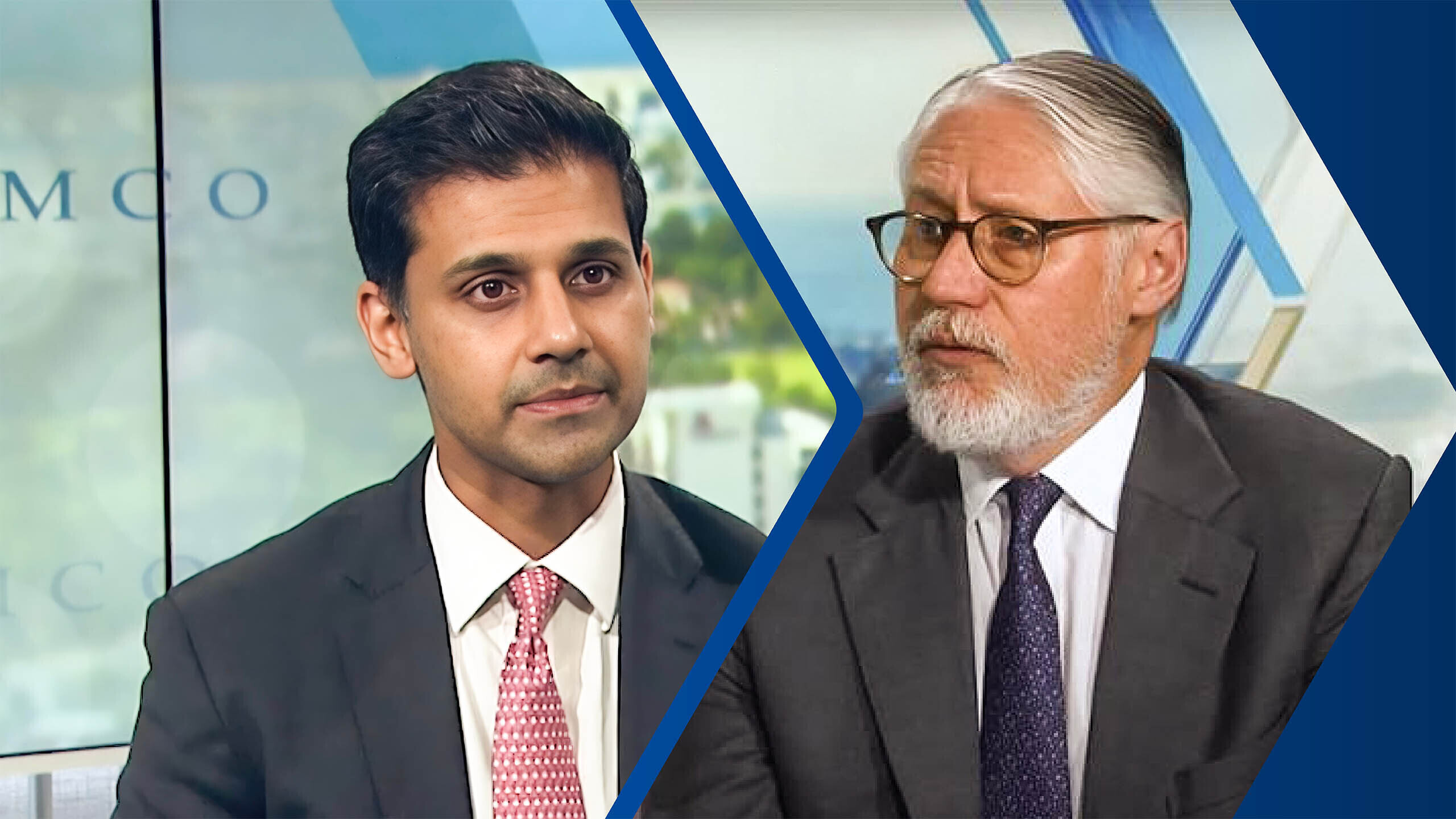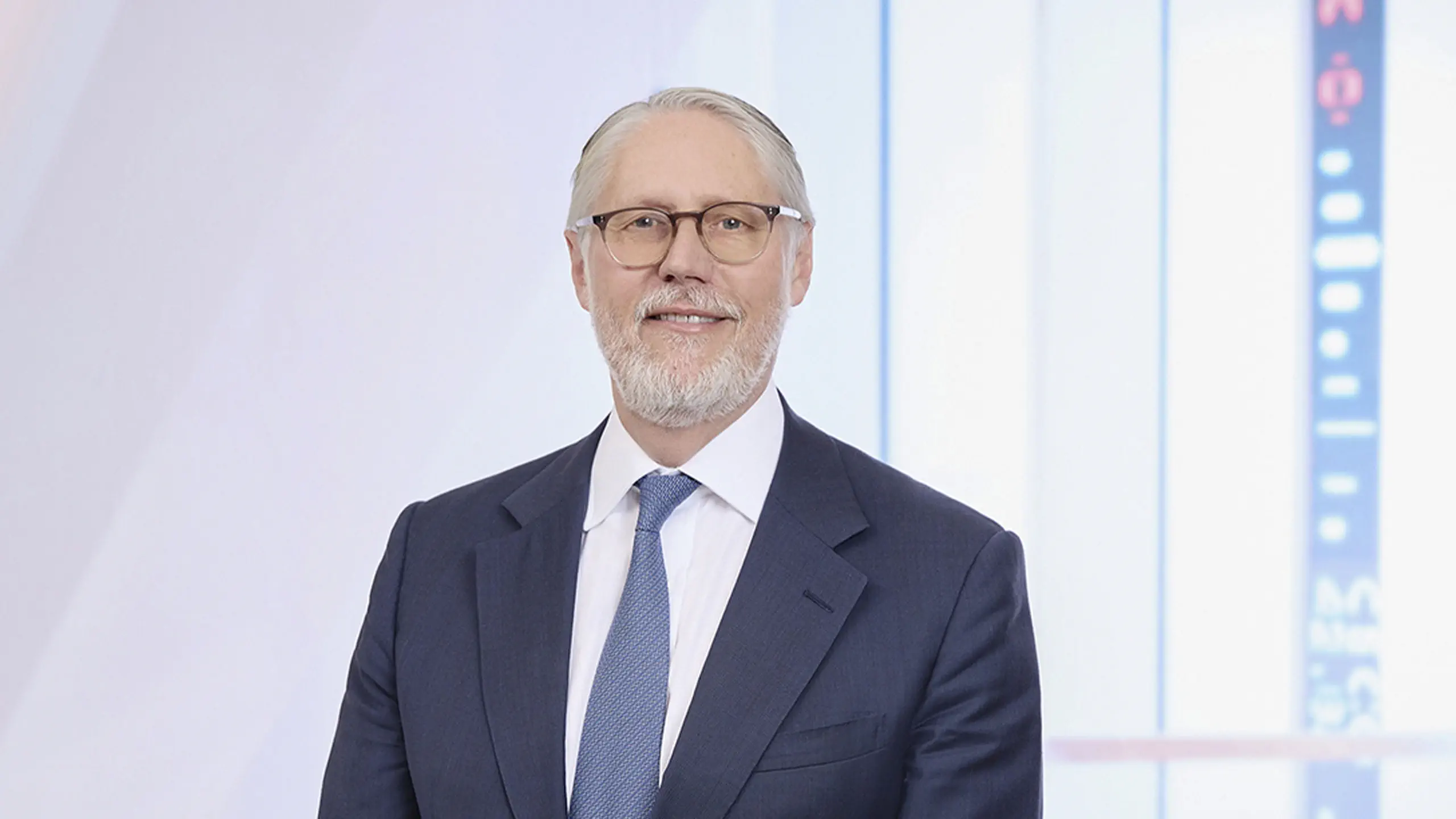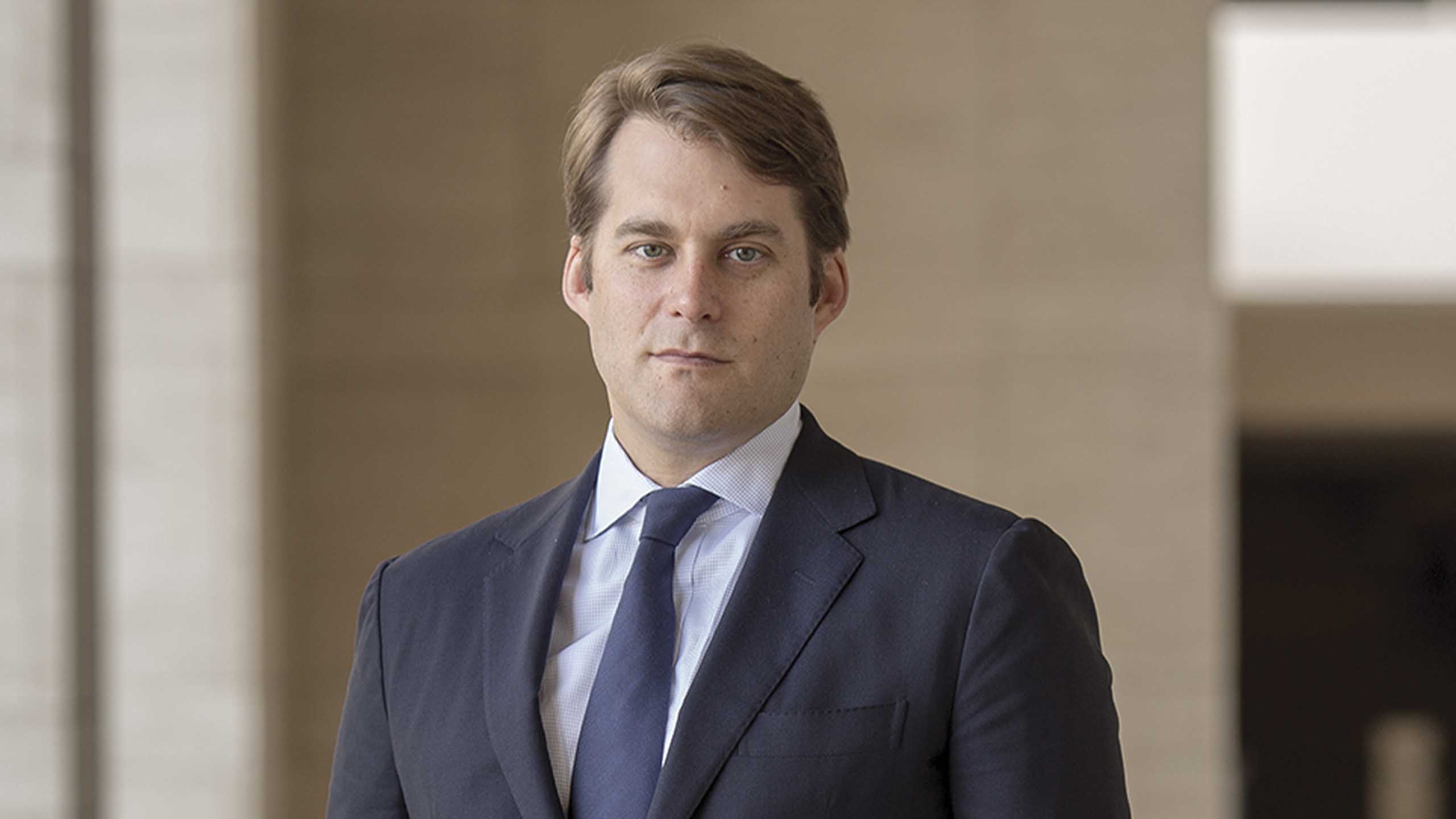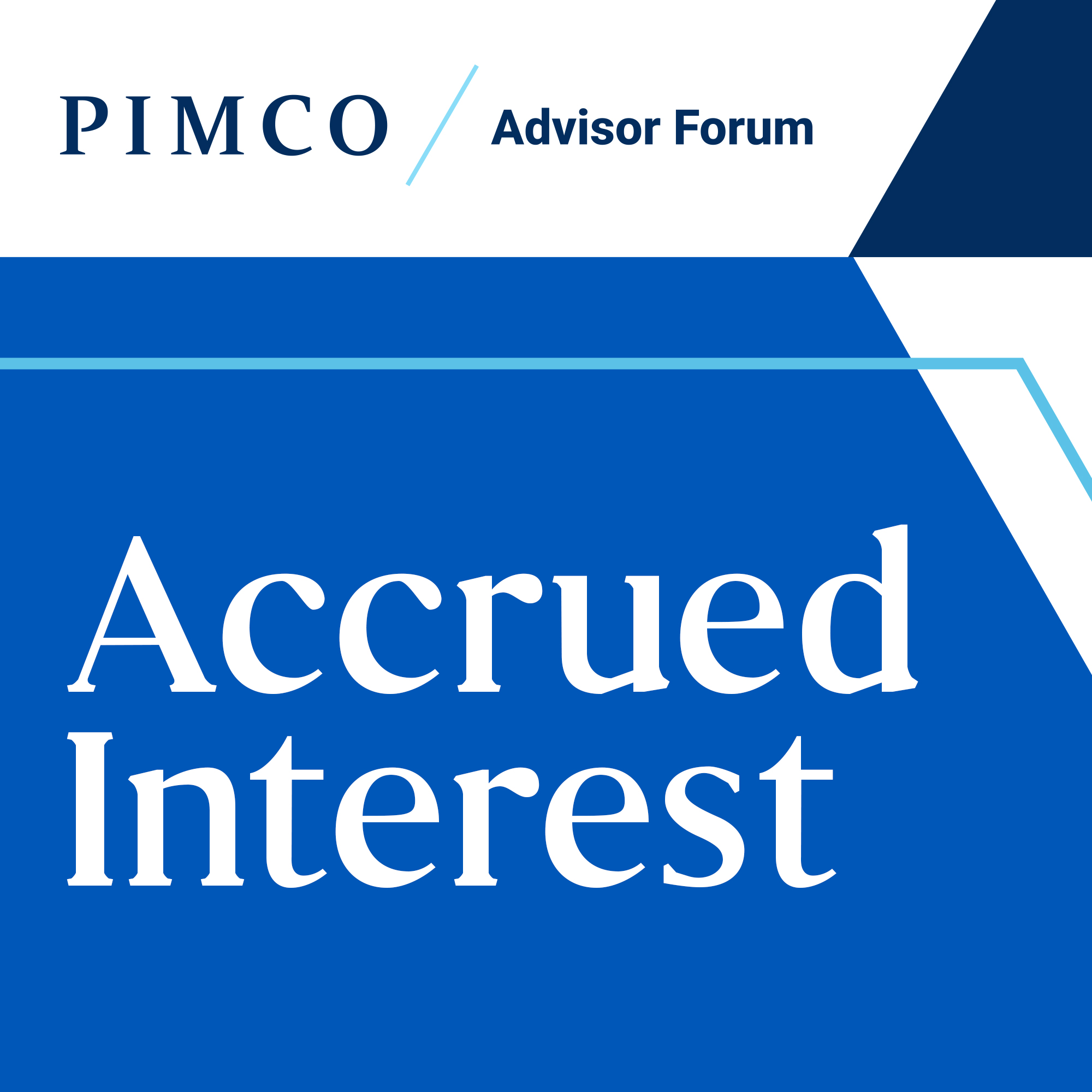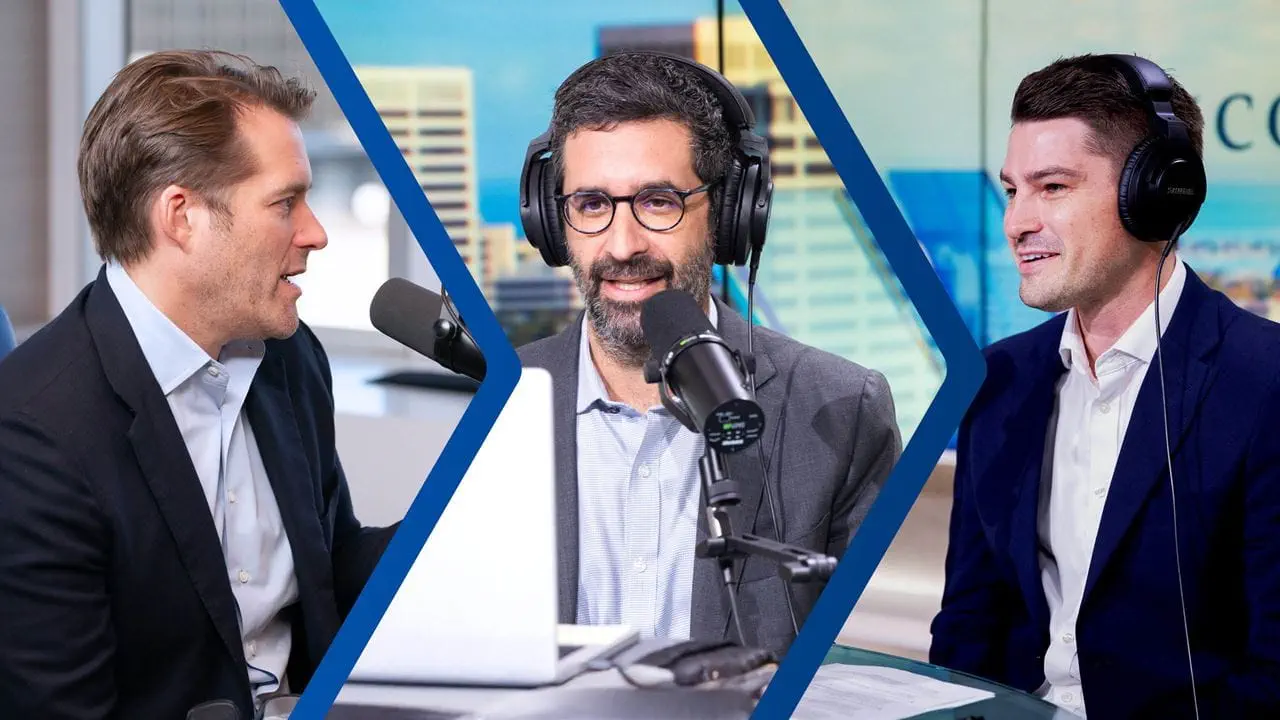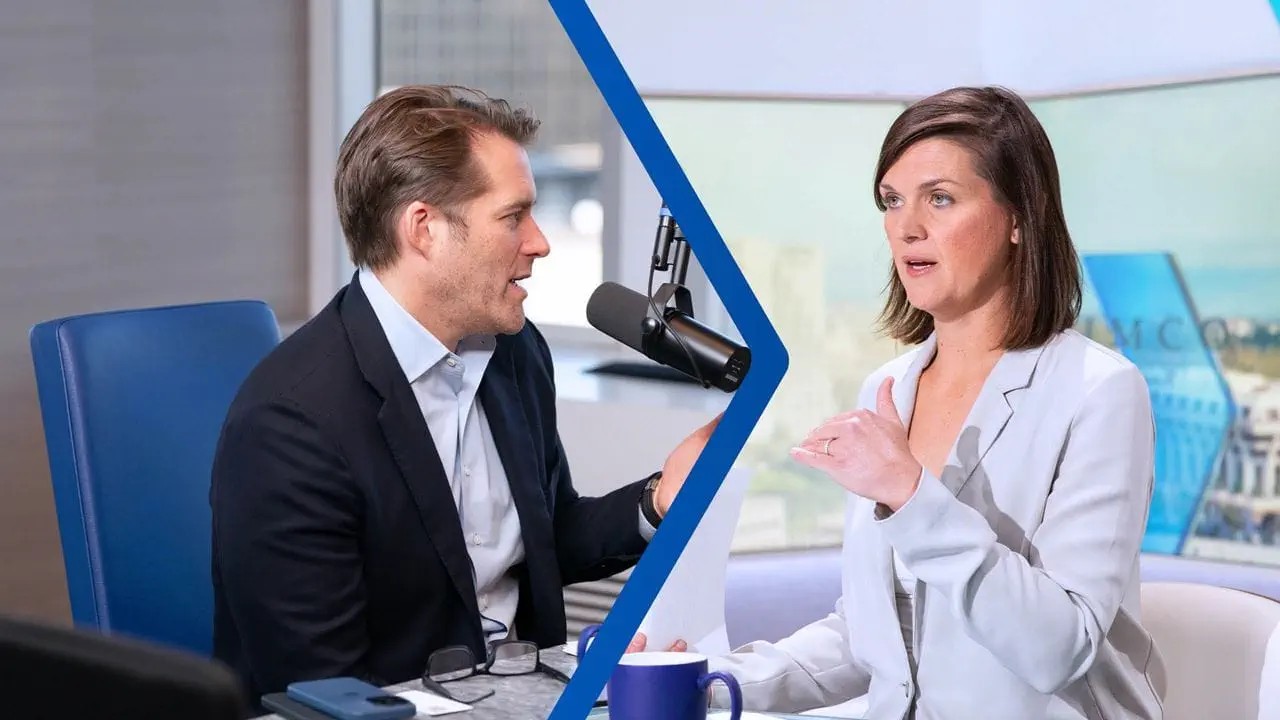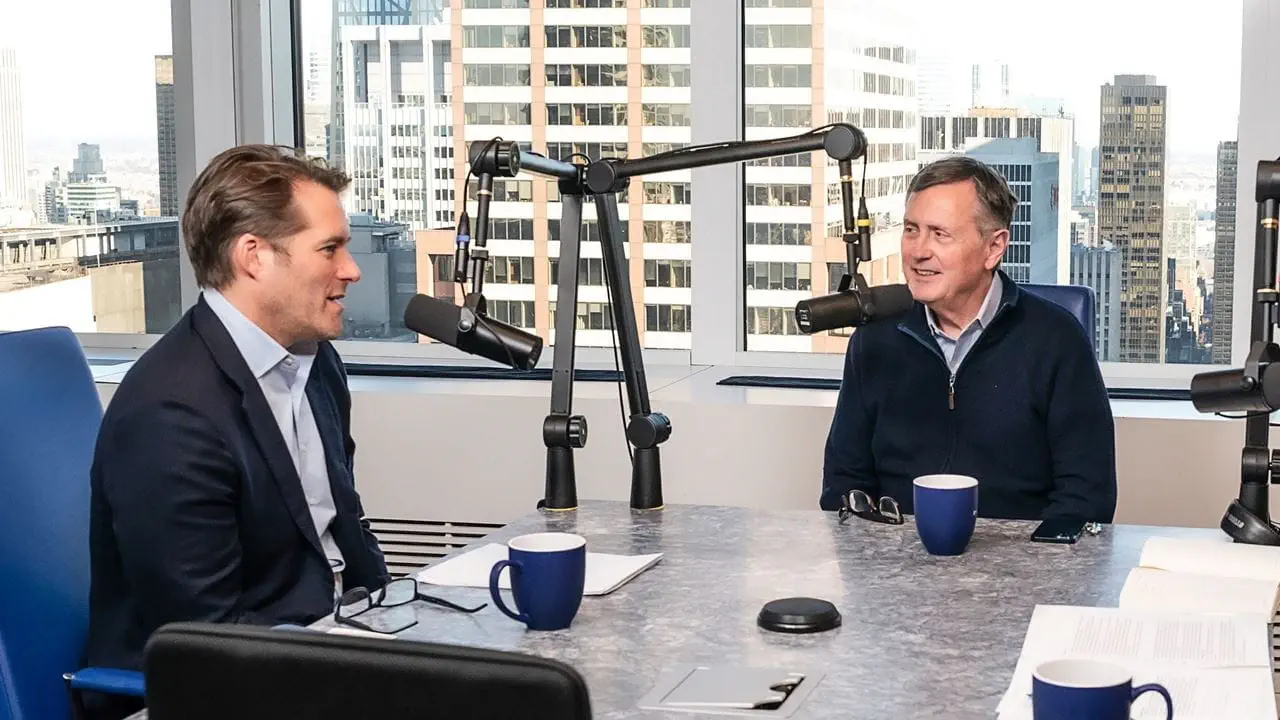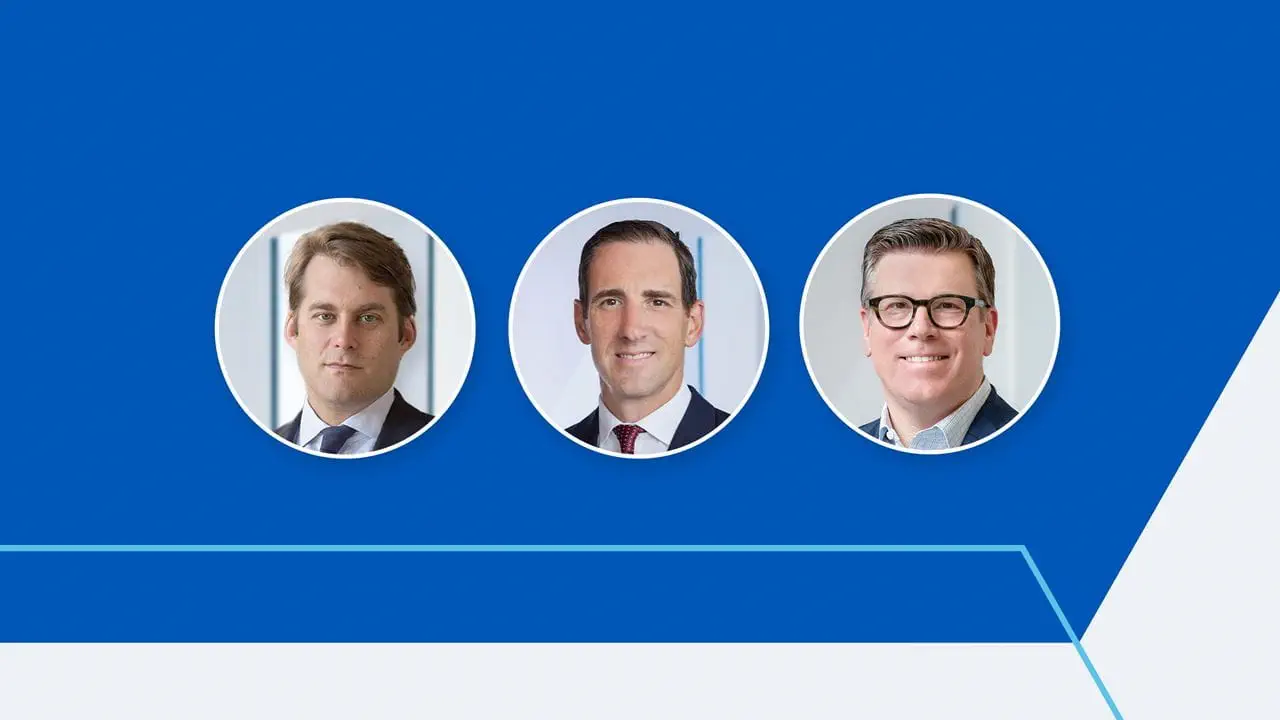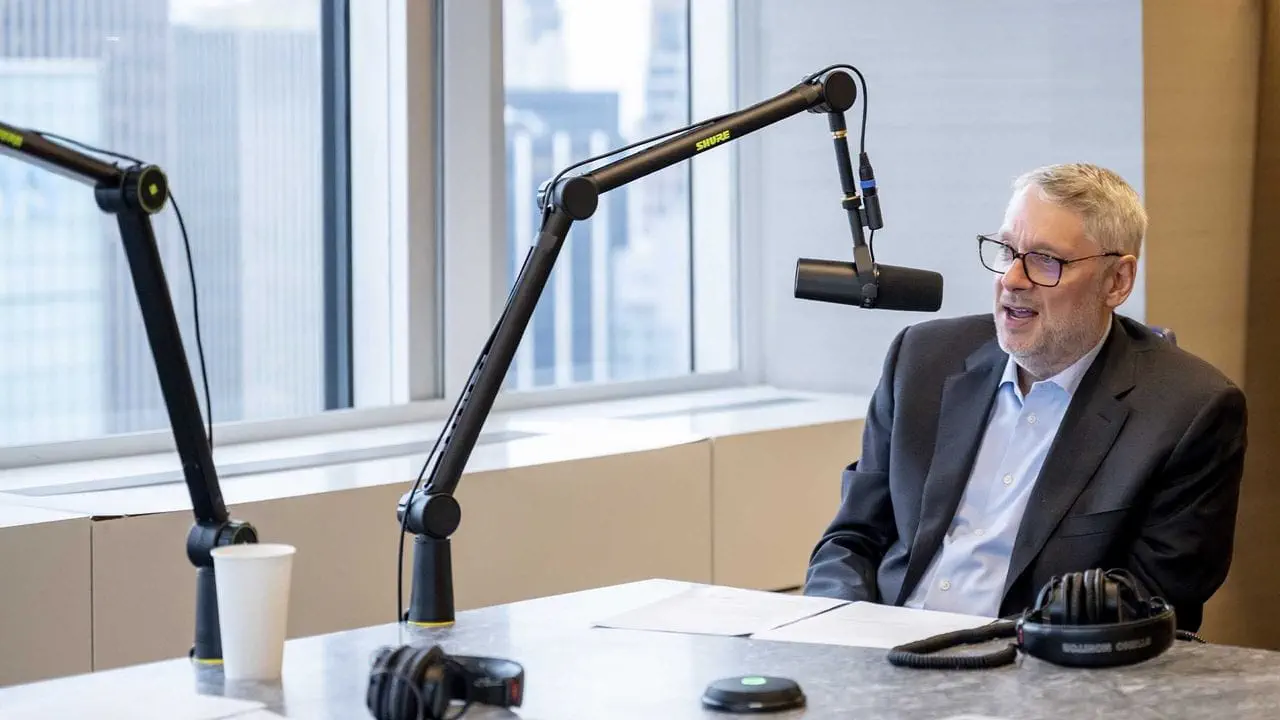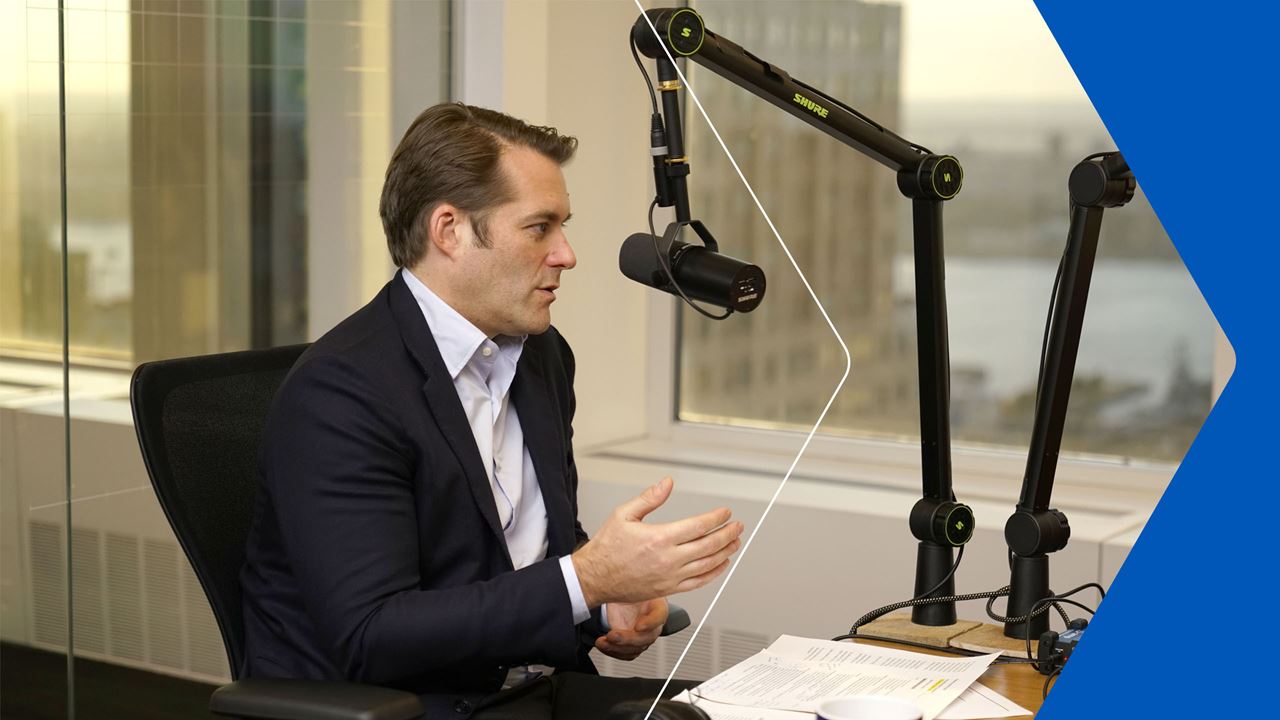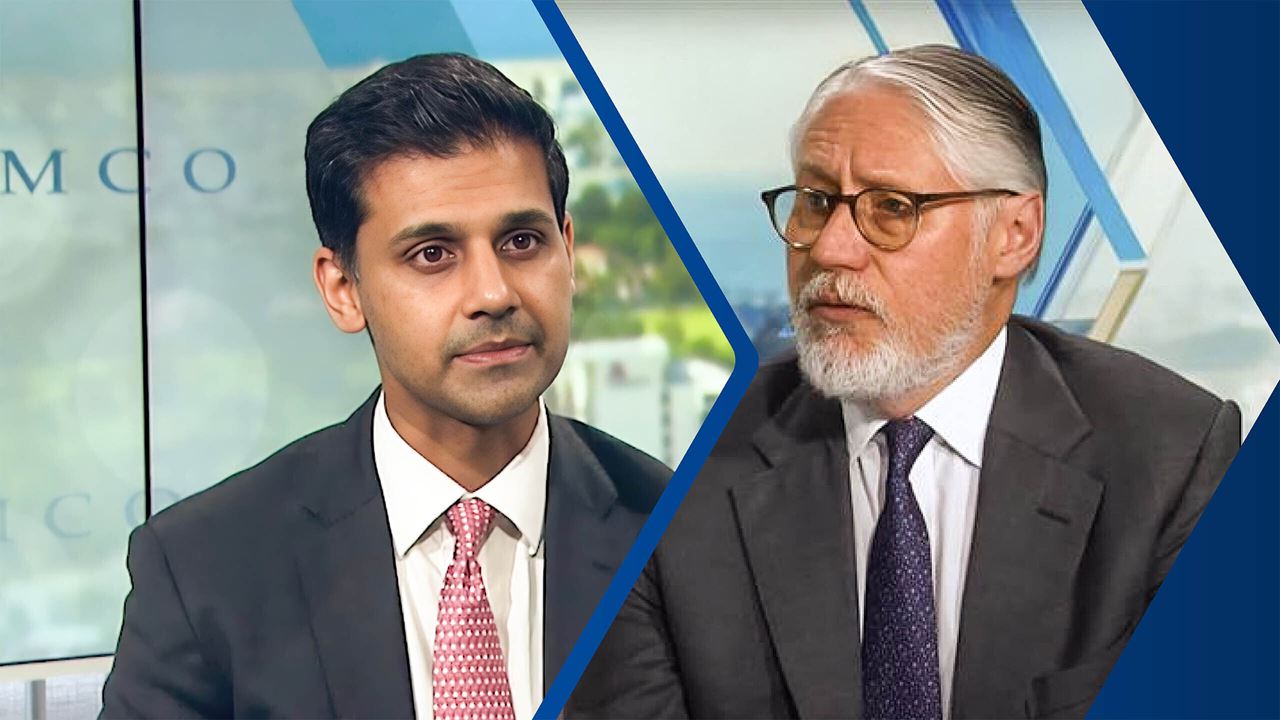Stay tuned after the conclusion of the podcast for additional important information.
RECORDED EPISODE:
GREGORY HALL: Hi everybody! Welcome to another episode of Accrued Interest, PIMCO's podcast, dedicated to financial advisors and their clients. My name's Gregory Hall. I lead the US Wealth Management business at PIMCO. And as always, I'll be your host. I'm really excited for today's episode, because for the third time this year, we have Marc Schneider and Pramol Dhawan joining me, for a conversation.
Now, you may remember, earlier in the year, Marc and Pramol began coming onto the podcast to discuss, a piece that they write on a quarterly basis, it's called PIMCO Perspectives. Marc is our CIO of non-Traditional Strategies. Pramol Heads, our Emerging Market Investment Business. Both of them serve on the investment committee at PIMCO.
And this PIMCO Perspectives piece that they publish is an opportunity for them to get together and share some thoughts, it gives them an opportunity to be creative, to be thought provoking, and to introduce some new ideas to the conversation. So, as you can imagine, that's always really good fodder for, a podcast. It's been a pleasure to have them, on the show. It's a pleasure today to have you guys join. So, Marc Pramol, thanks for your repeat, appearances here.
MARC SEIDNER: Always fun being here. Thanks for having us again, Greg.
GREGORY HALL: No, we appreciate you coming back and for those of you, doing the math at home, it's a quarterly piece. This is their third appearance, so we'll have at least one more of these, before the year is out. The last time we spoke on the pod, was April 24th. That was the recording date. And so that seems like both five minutes ago and about 50 years ago at this point, we were really just in the wake of Liberation Day and the tariff announcements. Markets were very much, in that kind of roiling, you know, phase that we all experienced. And what we talked about, of course, was, the last piece that you had published, you know, shortly before that conversation which was entitled Trade Wars in the US Dollar.
Very fitting for what was going on at the time. And we talked a lot about, weakness in the US dollar and what the administration's policy agenda as it related to tariffs and trade, you know, might do not just to the dollar, but to kind of the whole landscape of international assets relative to US assets. You've just published a piece, on July 17th, and we'll link to all this in the show notes for those of you listening.
And it's entitled, Holding Steady Amid Whipsawing Markets. So clearly pointing to some of the volatility and the movements that have occurred since you published that, and it's pretty interesting because, you know, when the last time we spoke, you two obviously had a viewpoint that, investors ought to be looking outside the US as a means of diversification and finding sources of return. And on a year to date basis, you know, I think the numbers really bear that out.
You know, what are you guys looking at kind of over the near term horizon? Where do you think we're situated in terms of, you know, the opportunity set? And then we'll just talk about the piece after that.
PRAMOL DHAWAN: So maybe I can kick it off. Whilst we sort of think that, investors want to get a sense of analogs on markets, and whilst we think the past may not be prologue, we think that the past six months is actually a pretty good, analogy of what markets can expect going forward. And that's around the continued outperformance of global markets vis-a-vis the US markets. The dollar has is down 10 to 11%. That's the worst start that the dollar's had in 50 odd years.
We think that that's due to tariff related risks, coupled with a declining interest rate differentials and heightened fiscal worries that we have here in the US. And much of that is likely gonna continue go going forward. Although the pace may iterate over time, we think that those are well entrenched fears from markets. When we think about tariffs, the effective tariff rate down the road can jump to as high as 20, 22% depending on where we land with effective tariffs.
GREGORY HALL: Where is it today, Pramol after post April?
PRAMOL DHAWAN: 15%. Yeah. Give or give or take.
GREGORY HALL: And then where would that have been in December of last year?
PRAMOL DHAWAN: Three.
GREGORY HALL: Wow. So three to 15, a five x change, and you think maybe up to 20 plus,
PRAMOL DHAWAN: 20 plus depending on where we land with the new waves of tariffs. I think the first thing to sort of internalize is well, who's paying for all of that? And you know, if you just take a simple look at US import prices, it sort of suggests that the US consumers borne the brunt of those tariffs today. And had that not been the case, you would've seen US import prices collapse, and we really haven't seen that.
So, I think when we think about earnings and equities on a forward looking basis, it's important to get a sense that how those tariff related US corporates will post their earnings and their corporate profit margins. Important to note that they actually post earnings later than other US corporations. So we are looking very closely to bear earnings, just to really get a sense of their profit margins, get a sense of where we think the consumers and how much buffer it has to be able to absorb these, these price increases.
And then when we think about the overall backdrop, it continues to be one of a dollar that we think is going to be structurally on the back foot US curve, which is structurally gonna be steeper because of fiscal worries. So whilst assets have rebounded, US assets have rebounded, US equities have rebounded quite impressively, there has been a noticeable impairment on any assets that touch the US sovereign balance sheet.
And this is the market pricing in some discount to US assets, and particularly the sovereign balance sheet, not just the private sector balance sheet. And we think that that is very similar to what we've seen across other developed market countries and indeed in emerging market economies when they have had bouts of what we call fiscal dominance, where there's a high level of fiscal deficits in perpetuity. So, past may not be prologue, but we think the past six months is a good analog of what to expect going forward.
GREGORY HALL: Marc, just to get you in on the conversation, you know, Pramol, you know, I think, you know, laying out kind of the broader thesis for a continuation of some of the trends that we've seen, anything in the Big Beautiful Bill in some of the recent tariff conversations in maybe, you know, some of the drama or discussion depending on how you view it around Chairman Powell, anything tactically there that we ought to be thinking about in terms of potentially either reinforcing or changing some of these views
MARC SEIDNER: That probably reinforce a lot of what we we've been talking about and some of what Pramol just said. I mean, it's interesting, right? I mean, Agg up 4%, year to date, and, it's by the way, it's about the same over the last 12 months or so, at least for an active version of an aggregate oriented portfolio or a broad US based fixed income portfolio. But that really undermines the opportunity that exists. You know, and I'll say this carefully because Pramol does run our emerging market strategies, but if you look at emerging market local bonds in an active fashion, I mean, you're talking about 14% returns over the last 12 months. Wow! You know, even, you know, sort of globally oriented, flexible, benchmark agnostic, maybe call 'em dynamic strategies up close to 8%.
You know, we've been trying to, you know, convince folks to look for opportunities to sort of term out lock in, get active in fixed income and I think there's some that sort of still are stuck in a motive, well cash looks okay at for a quarter. And I think the, one of the main points we make is, well, you know, the evidence is beginning to stack up against that argument because there's some really, really interesting returns to be harvested in the world.
And a lot of these themes, I think, reinforce that, you know, you, a lot of what's happened since we were last on, in late April makes a lot of sense, right? I mean, equities have rebounded. We still have uncertainty around tariffs, but, you know, the worst case, the worst tail is probably eliminated.
Sure, 20 to 22 is a much higher average effective tariff rate than 3% where we would've been last year. But the worst case has really been averted in terms of global trade disintegration, which I think was thought of, you know, you've got the Big Beautiful Bill. So I, you know, there's, I think there's some optimism there. The macro momentum in the United States, you know, is beginning to turn, you know, initially we had all this negative sentiment and soft data that never really flowed through into the hard data. Now we think the hard data's gonna continue to sort of soften. But, you know, worst cases...
GREGORY HALL: When you say soft data, does that, you mean like consumer confidence and...
MARC SEIDNER: Confidence, business confidence survey type data, that sort of is, quick to pick up on potential trends, but not always a hundred percent reliable. And we do have, you know, we do have, I'll probably try to use polite words, but, uncertainty, maybe there's other words to use around the Fed chairmanship, and we can certainly talk about that, a little bit more. I think we both have pretty strong views. And so it's no real surprise, you know, equities are, have bounced back making new highs.
Bonds are generally largely unchanged. Dollar is substantially weaker and within the bond complex curves are much steeper, which makes a lot of sense, as sovereign as Pramol said, it's sovereign risk that kind of exists. And you know, you look at the pivot that's happened in the curve since the weekend pre Liberation Day, the two year notes down six basis points in yield, and the 30 year notes up 29 basis points in yield, and there's 50 basis points, more risk premia in longer duration bonds.
And that's a combination of uncertainty around tariffs, uncertainty around inflationary impact that could possibly come outta tariffs. It's not our base case, but you certainly have to factor that in and, you know, what's the impact of a Big Beautiful Bill and continuing to deteriorate debt and deficit dynamics. So a lot of the themes are the same, although there are definitely some nuances that make the discussion super interesting.
GREGORY HALL: Do you, well, let's talk about the Fed chairmanship, 'cause that's emerged really just over the last couple of weeks as a flashpoint. It had been something that we talked about, you know, really since the election. But, it really perked up, I guess a couple of weeks ago when that meeting occurred, and there were, you know, there was some, X, Twitter, I don't know, I never know what to say, discussion of it, after the fact. I'm sure you guys do have strong views. What's your sense of the most likely outcome there?
MARC SEIDNER: Pramol you wanna go first or you want me to?
PRAMOL DHAWAN: Yeah, I mean, I think it sort of, first and foremost, it makes us to really widen our perspectives of what we think is possible and probable in the US because, you know, it wasn't more than six months ago that many of our folks internally at PIMCO were just removing this possibility from the table. Now we brought it in, we've sort of normalized it a little bit more.
We've seen what the market reaction could be, could look like, and then obviously they walked back that X or tweet or whatever you wanna call it. There have been analogies in the past, in developed markets. You know, think in the sixties when in Canada when, they had the coin affair where there was a dispute between the then Chairman of Bank of Canada and the government.
The government wanting to pursue a more aggressive monetary policy, against the backdrop of the abandonment of the Bretton Woods system. Subsequently, what happened is a Canadian dollar weakens substantially. The curve in Canada steepened up significantly. We've seen various iterations, just market reaction is always the same. Equity's down, currency down, curve steeper. We shouldn't normalize the, we should internalize that this is going to be no different, even though the US is a reserve currency, the market's gonna play incredible attention to what happens here. This is not normal in market norms.
MARC SEIDNER: I mean, this is probably way too strong of a statement. And Pramol, I think there's this language that you've used, but the United States is beginning to act like an emerging market, right? I mean, questioning the validity of critical institutions that support, you know, whether it be legal systems or they be financial systems. And it's, right. I mean, you know, replacing Central Bank Governors because they fall out of favor is a tool in the toolkit for emerging market leaders. Less so for developed markets, and certainly not for the United States. Look, Libby put out a note this morning, Libby Cantrill, who does our policy analysis, and is very good at it and says...
GREGORY HALL: We can link, we'll link to that note in the show notes as well, yeah.
MARC SEIDNER: Because it was a good note. And, you know, she says it's a pretty low probability. I mean, there's all kinds of hurdles that have to be overcome. You know, one, the legality, two, what it would mean in terms of political repercussions, in getting the next chair, confirmed through the Senate.
And three, by the way, the bond market's performing just fine. Like, I don't know that you want to, I don't know that one would want to, topple the asset cart, maybe we're too focused on assets and not enough on apples, but you know, but topple the apple cart. Let me try to get that out succinctly. And just, I don't know if Pramol agrees with this, it's my own personal view.
I don't know why they, you know, Jerome Powell has actually done quite a remarkable job as chair of the Fed through a very challenging set of circumstances, not just this year, but over multiple years and inflation expectations are relatively well contained yields while, you know, having ratcheted much higher in 2022 because of the inflationary consequences of, you know, more to do with fiscal policy rather than monetary policy in late 21 and in early 22. And he, I think the Powell Fed wants to cut rates.
They just want to get through the uncertainty over, you know, what has been created around impact of Big Beautiful Bill impact of tariff policy. Seeing the data, you know, whether it be hard or soft data, whether it be, you know, real time economic data or more survey related data. Market's pricing in two cuts for the balance of 2025, two Governors are now talking about the potential of putting July on the table for a 25 basis point rate cut.
There's three rate cuts priced in for three or so priced in for 2026, which gets us down to call it a 3% terminal interest rate. I still think that looks pretty attractive, and I still think that creates a nice tailwind for bonds. But the Powell Fed's actually done a decent job and the market's responding accordingly to what's coming out of the Fed.
GREGORY HALL: Yeah. I want to, let's talk about market response, you know, the equity market. It hasn't just recovered what it lost when we were envisioning global trade disintegration to use your word.
It's now up, you know, above that. And, I think maybe this will take us a little bit more deeply into your piece, because you guys do in the piece sort of advocate, I think a continuation of this theme of, you know, rotating away from an asset allocation perspective, US equities which seemed rich to you at the time. I can only imagine they seem richer today. And I'll let you guys tell me if I've got that wrong.
Seeking out international opportunities, and then of course I think we should just talk about the US bond market, just kind of given some of the deficit fears. But let's start with equities, kind of what you're thinking there. And then we'll move through international markets and we'll talk about the US market last.
MARC SEIDNER: I mean, look equities are probably fine, right? I mean, I don't think there are the only problem with equities is valuation, right? And so, you know, do you wanna pay 21 times? I don't know. Maybe, maybe not. You'd certainly rather pay something less, you know, mid or upper teens. But the fact of the matter of, is if, you know, the world is gonna continue growing and the US is gonna lead the technology and artificial intelligence, you know, not evolution, but revolution, then maybe it's fine.
I would say from an asset allocation perspective, and so I'm, you know, agnostic, slightly positive on equities, I would probably say, and just, just concerned about valuation. But I would say for a broader asset allocation perspective, I think you want a barbell, a portfolio like I, you know, this discussion about whether or not, you know, whether or not the post 22 and with debt and deficit dynamics, whether or not the stock bond correlation is forever altered and bonds will not play the diversifying role that they have in a broader asset allocation, or...
GREGORY HALL: I've seen, I'm glad you brought it up because I've seen, I've literally seen, you know, pieces that purport to be deep research pieces that say 60/40 is dead bond and stock correlation has been positive...
MARC SEIDNER: Nonsense! Nonsense!
GREGORY HALL: And, but the date range cited is literally from mid-2022 to, you know, mid 2023 or something like...
MARC SEIDNER: Well, and people go look at April, look at like the weeks after Liberation Day, you know, stocks were going down, bond deals were going up. See, it's forever broke. I'm like, but you're like, come on, it's like four days. You know, maybe a tiny bit more than that, but it's just not based in science. I mean, there's absolutely no scientific thinking. It's all you know, Danger, Will Robinson and some robot, like waving his arms around in the air, probably dating myself with that analogy. Greg knows what I'm talking about.
GREGORY HALL: We'll link to it in the show notes.
[TECH TALK]
MARC SEIDNER: But again, I would probably barbell a portfolio, I would have a healthy degree of equities and I would have a healthy degree of high quality bonds. Certainly not the back end of the yield curve, but the intermediate part of the yield curve. We can talk more about that later. And I wouldn't have, you know, again, credit's probably fine, but again, valuations are back to their kind of, you know, remember in February, high yield spreads, were there zeroth percentile?
Well, they're still 30 basis points wider than pre Liberation Day. But, you know, and that puts them at their eighth percentile or something like that. And so I'd probably actually think about, you know, hollowing out some of the riskier credit, keeping that out of a portfolio, getting my yield from high quality diversified fixed income, perhaps substituting in some emerging markets and the like, and, you know, not, and being relatively agnostic on equities. I think that's a decent portfolio from an asset allocation perspective.
GREGORY HALL: Pramol, do you jump in here.
PRAMOL DHAWAN: Yeah! No, I also think, you know, that the equities are gonna be fine, should be internalized. That nominal growth is gonna be fine in the US we're sort of expecting nominal growth to be in the sort of four and a half to five handles. That's real growth of one and a half percent over our secular horizon, a three to five year horizon. That's not great.
If you think about the level of deficit we're needing to incur, to be able to get one and a half percent real growth, six to 7% deficits to get one and a half percent real growth, that's not great. And that invokes memories of fiscal dominance and fiscal issues. So I think, listen, in absolute terms, US equities, five to 6% sure, fine. We just think there are gonna be better opportunities elsewhere. And your tail risk that you're underwriting on this thing is huge.
GREGORY HALL: Well, you raised the specter earlier that I wanted to pull on the thread a little bit, 'cause I hear, I was in Pittsburgh and Minneapolis last week just out meeting advisors. And it was a great trip. Great summer cities, Minneapolis in the summer is, it's gorgeous. And I'd been there many times, but only during January and February for some reason.
MARC SEIDNER: Doesn't the license plate read Land of 10,000 Lakes? I mean, that must be, that's pretty awesome for summertime.
GREGORY HALL: I visited two of 'em. I can't attest to the other, you know, 9,998. But yeah, I mean, it's a beautiful spot. Anyways, let's not get distracted, but for those Minnesotans out there, it was a nice visit, to your homeland. And in talking to a bunch of advisors, you know, this notion of, hey, when, you know, we know tariffs are potentially inflationary or they're potentially a break on growth, when are we gonna see that? And you know, there's a lot of reasons those numbers haven't played through to the hard data yet, but is that part of the left tail that you feel like equity owners are underwriting today, Pramol?
PRAMOL DHAWAN: Yeah. I mean, it's certainly a part of the left tail. Unfortunately for the US I think when you get into Q4, the immigration dynamics are gonna start to reverse quite meaningfully at a time where those corporate profit margins or the ability for corporates to be able to absorb price increases, are going to start to roll over.
So you face the potential of higher costs at a time where growth is gonna be, the hard data as mark ordered is gonna be probably surprising on the downside. And that leaves you with a bit of a stagflationary backdrop, which is obviously not great for risk assets. And hence the need to feel a little bit more cautious. And, you know, when you think about negative real rates in the US, I mean for a long period of time, we've had, sort of flat to slightly elevated, real rates.
If you do go into a period of negative real rates that inherently is a tax on foreign investor inflows into the US. Now you may not need a section 899 to overtly tax foreign investment on US assets. If you run negative real rates, potentially with a new chair that might take the Fed funds levels down to neutral quite abruptly.
The interest rate differential evaporates between the US and the rest of the world, yet the manifestations of higher tariffs persist. And you may be an environment in the short term where those real rates in the US are structurally negative. And that will induce dollar weakness and that's part of our thesis about bond curves that are gonna steep in more term premium in the backend. I think what we are seeing is just more demand for premium to own assets when you run six to 7% deficits in perpetuity.
GREGORY HALL: Yeah, it's interesting! So if I understand you correctly, there's this Domino effect of, you know, the combination of tariff policy, likely rate cutting. We don't know when, we don't know how deeply, but I think, you know, you guys would argue, that the direction is more likely down on the front end and so that it creates basically a, you know, a, I don't know exactly the word, but certainly a disincentive foreigners to own US assets, US equities. You know, April was very painful for a lot of non-US investors, not just because the equity market went down, but because the dollar went down at the same time.
And so what was a, you know, a 10 or 15% hit became a 25 or a 30% hit depending on sort of what your home currency was, right. And that's incredibly meaningful. Especially when US equities formed such a large base of non-US investors’ portfolios. And I don't think you're arguing that the bond market in the US is immune from that, obviously quite the opposite, certainly at the back end, right?
PRAMOL DHAWAN: Well, to date it's important to internalize what we have seen and what we haven't seen. We haven't seen net selling of US assets by foreigners. We just haven't seen it. It's if anything, there's been marginal buying of US assets from foreign investors.
What we have seen is adjustments of something called hedge ratios, which is how much foreign currency exposure offshore asset managers want to take to the US. And by and large, for the last decade or so, they've had a propensity to run higher hedge ratios than not, more exposure to the US dollar as the dollar's gone up. And right now that there's an internalization that the volatility created by this movement and the dollar is starting to overwhelm the asset price returns of fixed income and equities.
Therefore, we're gonna adjust our hedge ratios and we're gonna hedge a little bit more currency. So that's really what we've seen post Liberation Day. We haven't yet seen material selling of US assets. Now, we've also been in a window where we've been having trade negotiations. So it sort of stands to reason why foreign asset owners may not want to sell US assets during a trade negotiation.
US assets also still out yield most of the rest of the world assets. So there is a yield advantage, another one of our pieces, within the US which, you know, if you do get into a new Fed Chairmanship and then maybe that disintegrates, and these are all things that we're starting to think about what can prompt the next iteration of a potential down leg-in in the currency. It's not just gonna be the adjustment of hedge, those hedge ratios, but likely going to formulate some sort of selling of the internalized assets.
GREGORY HALL: No, I'm, you know, it's funny, you're describing our secular outlook piece, the large piece that you guys are obviously very familiar with, but for our listeners, you know, we publish once a year that takes a longer term view on markets, you know, call it three, five, ten years. And it's entitled the Fragmentation Era. And it speaks exact to what you just spoke to this chain of events that might occur that really, you know, stress the, a lot of the things that we've taken for granted about the way financial markets have worked for the last 10 or 15 years.
So, amidst all of this, let me ask you guys, advisors are practical people, I'm sure they found this conversation interesting and thought provoking and scintillating, maybe at times funny, but what do we do here? You know, what would you recommend to advisors? What would you have them looking at in terms of opportunity sets and investment opportunities? What macro indicators do you think they ought to be focused on so that they kinda can navigate this complexity with some beacons to help them know where we are?
MARC SEIDNER: Yeah, I mean, I'll go back to the old phrase that we use a lot. There's $7 trillion sitting in money market funds, and the narrative we hear a lot is that, you know, four or five is just fine. And let's just let stay parked, you know, in four or 5% yields. You know, well, first of all, let's be clear, it's not five, it's not five, it's not five, it's four, and it's probably going to three pretty quickly.
And so I, you know, I, again, the muscle memory and the lingering reflections of 2022, I think have a lot of folks concerned about the bond market. And then you get into these discussions of correlations and debt dynamics and people, you know, their mind automatically goes to, you know, potentially longer duration bonds.
There is a fertile field to be harvested, within sort of 2, 3, 4, 5 year maturities with plenty of great, you know, with good starting yields, plenty of great opportunity for some additional spread or yield based upon, you know, various other instruments that a manager can or an investor can buy, or a, you know, a fixed income portfolio manager can invest in.
It's not too hard to come up with portfolios that are, you know, sort of, you know, three to five year duration, single average credit quality. So not a lot of credit risk and six and a half to seven and a half percent type potential returns. Like, Yay! Awesome! Fantastic! It's really not that hard. Like this is what test, this is what people should be focusing on, but they're still sort of stuck at that $7 trillion of $7 trillion vote every day to sit in the money market account and not do something else.
And that's what I, you know, that's what I think people should really be honing in on, in addition to the idea that, you know, whether or not the period of American exceptionalism is over or not. You know, you look at some of the data of US versus Europe, both on technology spend and regulation.
You think, well, maybe it's not really over, maybe it's a nice theme. But you know, the, we're all said, and we've referred to it, you know, the world starts from a position that's not very favorable technically for the United States, just very overweight US assets and so that terming out the very front end and looking for areas of global diversification, whether it be in fixed income or in equity, to those are two themes that'll, you know, and trying to be, you know, less exposed to the dollar to, you know, if you're an American, you wanna maintain purchasing power by not having all your assets go down as at dollar assets and be able to, you know, enjoy a global, you know, sit on a global stage.
And I think those are the three things that we'd sort of continue to press advisors and others to think about as we head into the second half of the year.
PRAMOL DHAWAN: Yeah. And I think from my side, it's easy to be dystopian about markets. There are a plethora of risks that are out there, politics, geopolitics, domestic risks here in the US. We've just had an important election in Japan, where the incumbent party, lost the vote there and the market sort of pushing towards more fiscal stimulus there. So some of these risks we highlight are US, but some of them are just endemic within the global opportunity set right now.
But, I think within the backdrop of rising risks, you should be dystopian if there are not rising opportunities at the same time, that's not at all what Marc and I are saying, this is a great backdrop for active opportunities, global opportunities where you can build robust portfolios. I would be more dystopian if those risks were there and there were no yield advantages.
I'd be more dystopian of the risks were there and that there weren't the same global opportunities. So whilst those risks are there, you know, they are, and they're likely gonna stay persistent. We just feel quite thankful that there are quite a lot of good global opportunities to be able to take advantage of right now.
GREGORY HALL: All right. Well guys, appreciate you being here. It's a great read. And, just to, you know, drive the point home for advisors who I know are busy and probably catching us, you know, in the car between visiting clients or, you know, racing off to another engagement. It's a couple of pages. It's really pithy, it's fast. Marc and Pramol will have a way of making their point very efficiently.
And I do think it gives any reader, you know, a good framework for thinking about what kind of risk they're taking by continuing to own US equities, what kind of risk, any investors taking by, continuing to be in cash as Marc pointed out eloquently. And then some of the other opportunities available, whether, you know, it's in our home market, here in the US, in intermediate maturity, bond portfolios, which we continue to favor.
We had Dan Ivascyn on the pod, just last month talking, you know, at length about, the characteristics of the US bond market, and then of course, international opportunities, which continue to be a theme for you guys that you're, publishing on. And it's great to have you here to give that different perspective, to our advisors. So thanks again for being here!
PRAMOL DHAWAN: Appreciate!
GREGORY HALL: As always, if you enjoyed today's podcast, we'd really encourage you to subscribe to it. Having subscribers helps us understand our impact on you and your practice. It helps us invest more, and bring, better and more focused material to you. So please do subscribe and let us know you're out there. We'll link to all the documents, referenced during today's show in our show notes.
I wanted to mention that accrued interest is part of the advisor forum. Advisor forum is PIMCO's one-stop destination for financial advisors, visiting us on the website, as well as, you know, reading some of our material that is geared toward financial advisors. It's really designed to bring you what you need, for your client conversations as quickly, efficiently, and as thoroughly as possible.
So please check us out at pimco.com and identify yourself as a financial advisor. You'll be taken straight to the Advisor forum site. Until next time, thanks for being with us. We appreciate your support, your attention, and
From This Episode
Part 1. Introduction
Part 2. The Global vs. U.S. Opportunity Set Today
Part 3. The Future of the Fed
Part 4. Asset Allocation: 60/40 or Something Else?
Part 5. How U.S. Macro Trends Could Play Out
Part 6. How Advisors Can Navigate Current Complexity
PIMCO Perspectives – Holding Steady Amid Whipsawing Markets
Extra Credit: PIMCO Perspectives with Marc Seidner and Pramol Dhawan on Trade Wars and the US Dollar

